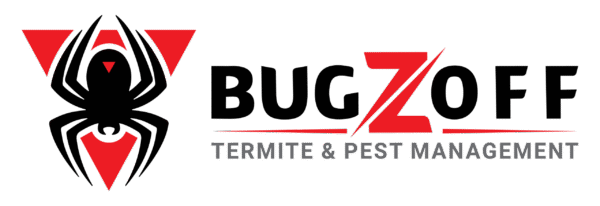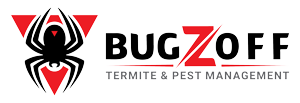Termites
Termites – The Silent Destroyers of Australian Homes
Termites are one of the most destructive and costly pests in Australia, responsible for millions of dollars in structural damage every year. These small but highly efficient insects feed on cellulose, the organic compound found in wood and plant materials, making homes, furniture, fences, and trees highly vulnerable to infestation.
A termite colony can contain millions of individuals, working 24/7 to tunnel through timber structures, weakening them from the inside out. Since termites work silently and often undetected, their presence may only become apparent once significant structural damage has already occurred. Unfortunately, most home and building insurance policies do not cover termite damage, making early detection and prevention essential.
At BUGZOFF Pest Control, we provide comprehensive termite management solutions, including inspection, treatment, and long-term prevention strategies, to safeguard your property from these relentless pests.
Understanding Termites – Where They Thrive and How They Operate
Termites are social insects that live in large colonies, typically found in homes, gardens, forests, and urban areas. They prefer warm, humid conditions and are commonly found in various environments where moisture and wood are present.
- Beneath buildings in subfloor areas and basements, where damp conditions provide an ideal habitat.
- Near plumbing leaks, drainage issues, and damp wood, which serve as moisture sources for termite survival.
- Inside walls, flooring, and ceiling cavities, where they can remain hidden while feeding on structural wood.
- In gardens, tree stumps, wooden fences, and decks, where they can establish colonies before moving towards buildings.
- Within cracks in concrete slabs, as small as 1–2mm, allowing termites to enter buildings undetected.
- Inside garden beds and wooden retaining walls, where high moisture levels and decaying wood provide the perfect nesting conditions.
Termites can access properties through underground tunnels and even enter buildings that lack direct wood contact with the soil, making every structure susceptible to potential infestation. Once termites establish themselves on a property, their colonies can expand rapidly, causing irreversible structural damage if left untreated.
How Termite Colonies Function
Termite colonies are complex social systems made up of different castes, each playing a specific role. A termite colony can range from hundreds to millions of individuals, depending on species and location.
Types of Termite Colonies in Australia
- Ground Mound
- Built above the ground, often with a hard protective shell.
- Contains internal tunnels and chambers where the queen, eggs, and young termites are housed.
- Typically found in open areas, gardens, and near homes.
- Arboreal (Tree Nest)
- Found high in trees, often attached to branches.
- Contains internal tunnels connected to tree cavities.
- Can house tens of thousands of termites.
- Pole Nest
- Small, round nests found on fence posts, wooden poles, and even transmission lines.
- Often linked to underground networks.
- Subterranean Nest
- Located underground or within tree stumps.
- Requires constant access to moisture.
- Can be found inside building walls, under flooring, and even between floors in multi-story structures.
- Tree Wood Nest
- Built inside living or dead trees, often targeting soft growth rings.
- Common in wooden houses, damp timber, and garden structures.
The Most Destructive Termite Species in Australia
With over 300 species of termites in Australia, only a few are considered highly destructive to homes and buildings. Proper identification is essential for effective treatment.
- Coptotermes Acinaciformis – The most destructive termite species, known for attacking homes, trees, and even boats.
- Schedorhinotermes Intermedius – Prefers coastal and mountainous regions, often found in tree stumps and underground.
- Coptotermes Frenchi – Common in urban NSW, aggressively feeding on softwood structures.
- Nasutitermes Exitiosus – Builds mound nests and is commonly found in urban areas with eucalyptus trees.
- Mastotermes Darwiniensis – One of the world’s most destructive termites, attacking buildings, crops, plastic, and even rubber.
Signs of a Termite Infestation in Your Home
Because termites remain hidden, it is crucial to know the warning signs of an infestation.
- Quiet clicking sounds from infested wood, produced by soldier termites banging their heads.
- Small piles of termite droppings (frass) resembling sawdust.
- Discarded wings from termite swarmers, often near windows and doors.
- Mud tubes on walls and surfaces, used for protection and moisture control.
- Uneven or bubbling paint, caused by moisture from termite activity.
- Hollow-sounding wood, indicating internal damage.
- Sagging floors, loose tiles, or jammed doors and windows due to wood expansion.
The Dangers of Termites – Why They Need Immediate Action
Ignoring termites can lead to severe consequences for your property.
- Structural Instability – Termites can weaken walls, floors, and roofs, leading to potential collapses.
- Property Devaluation – A history of termite damage can significantly reduce property resale value.
- Financial Loss – Repairing termite damage can cost thousands of dollars, often without insurance coverage.
- Health Risks – Termite infestations can trigger allergic reactions and poor indoor air quality.
How to Prevent a Termite Infestation
Indoor Prevention Tips
- Repair leaking pipes, faucets, and roofs to eliminate moisture.
- Schedule regular termite inspections to detect activity early.
- Seal cracks and gaps in flooring and walls.
Outdoor Prevention Tips
- Ensure proper drainage to avoid moisture buildup.
- Keep firewood, mulch, wooden retaining walls, and garden beds away from your home’s foundation.
- Use termite-resistant timber when building or renovating.
How BUGZOFF Pest Control Manages Termites
At BUGZOFF Pest Control, we offer a range of termite treatment and prevention solutions, designed to protect homes and businesses from infestation.
Our Termite Control Approach
- Comprehensive Termite Inspections
- Using thermal imaging, moisture meters, and acoustic sensors.
- Identifying high-risk areas and entry points, including cracks in concrete slabs, wooden retaining walls, and garden beds.
- Advanced Termite Treatment Options
- Baiting Systems – Eliminates colonies through targeted termite attraction.
- Foaming Treatments – Injects insecticide deep into wood and wall voids.
- Chemical Soil Barriers – Creates an invisible protective shield around the property.
- Long-Term Termite Prevention
- Reticulation Systems – Delivers termite treatment directly into the soil.
- Ongoing Monitoring Plans – Regular inspections and treatments to prevent reinfestation.
- Chemical Soil Barriers – Creates an invisible protective shield around the property.
Protect Your Property Before It’s Too Late
Termites can cause irreversible damage if left untreated. Early detection, professional treatment, and ongoing prevention are crucial for protecting your home or business.
If you suspect a termite problem, do not wait. Contact BUGZOFF Pest Control today for a professional inspection and expert treatment plan.
Frequently Asked Questions
How can I identify a termite infestation?
Signs of a termite infestation include mud tubes, termite droppings, hollow-sounding wood, sagging floorboards, and flying termites.
How do I identify different termite species?
Identifying termite species can be difficult and often requires professional assistance.
Can termites contaminate food?
Termites can contaminate food with their faeces and saliva.
Are termites dangerous to humans?
Termites are not typically dangerous to humans, but they can cause property damage and trigger allergic reactions in some people.
Can I treat a termite infestation myself?
While some DIY methods may be effective for minor infestations, professional treatment is often necessary to eliminate a severe infestation.
Prevention and Control
How can I prevent termites from entering my home?
Seal cracks and crevices, maintain proper ventilation, and eliminate moisture sources.
What can I do if I find termites in my home?
Contact a professional pest control service for inspection and treatment.
Are there DIY methods for termite control?
While some DIY methods may be effective for minor infestations, professional treatment is often necessary for severe infestations.
How often should I have my home inspected for termites?
Annual inspections are recommended to detect infestations early and prevent significant damage


